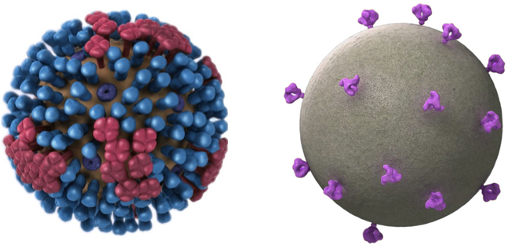 <= HIV
<= HIVMIT Club of DC May 1, 2023
The puzzle of HIV spikes
Influenza =>  <= HIV
<= HIV
Assaf Amitai Shenshen Wang Arup K. Chakraborty
Mehran Kardar (MIT)
Outline
I. Introduction: B cells, Antibodies, Antigens, and the puzzle of low HIV spike density
II. Affinity Maturation: Germinal Center, Rapid evolution of antibodies, Fisher and Price equations
III. Fitness & Evolution: Competition for virus capture and proliferation signal from helper T cells
IV. Optimal density for eliciting potent antibodies; implications for HIV spikes & nanoparticle vaccination
V. Broadly neutralizing Antibodies: Controlling affinity maturation against a mutable virus
VI. Summary
The spike protein on the envelope of virus mediates its entry into the host cell, and high spike densities promote infection. While most viruses have high spike density, HIV has almost hundred times fewer spikes, a puzzle that we would like to understand. The target of HIV are host immune cells associated with the production of antibodies that neutralize infection. By modeling maturation of antibodies as a rapid form of evolution, we show that an intermediate spike density promotes the strongest antibodies. Thus, viruses may have evolved to have extreme spike densities (high or low) to evade potent antibody immune response. We suggest that the dramatic depletion of immune cells associated with antibody production at the outset of HIV infection provides a potential evolutionary explanation for the low spike density of HIV. This understanding furnishes guidance for design of synthetic vaccine particles.